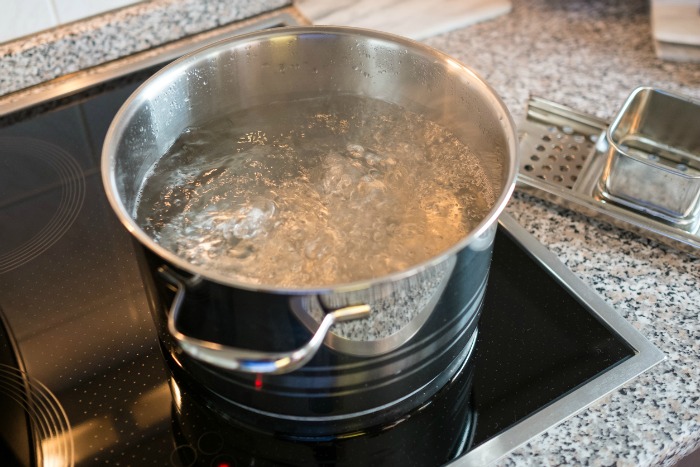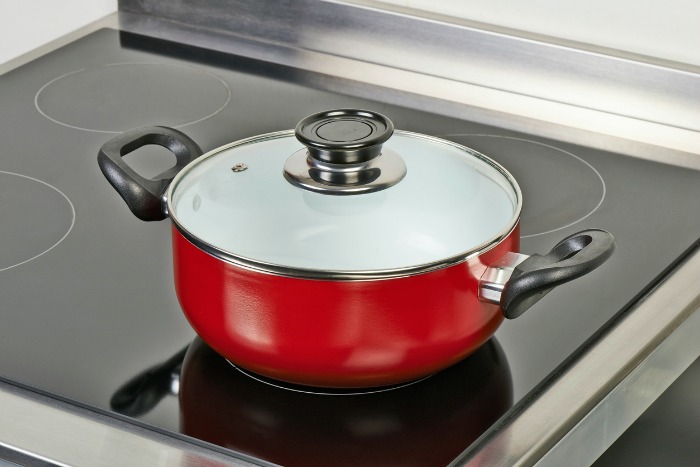Ask the Experts: What Is Induction Cooking?
Posted by Julie on Apr 20th 2017
Q: I've heard a lot about induction cooking. How does it work? If I replace my electric range with an induction cooktop, do I have to replace my cookware too?
A: Induction is simply another means of generating heat for cooking. An electric range uses electricity to heat the cooking surface (either a burner or cooktop), and a gas range uses natural gas to do the same. Then the heat is transferred to the cookware and its contents.

On the other hand, an induction cooktop uses a magnetic field to generate heat. Electric current passes through magnetic coils in the cooktop, which creates a magnetic field. That magnetic field causes electrons in your cookware to vibrate, which generates heat. But unlike gas and electric ranges, an induction cooktop doesn't get hot. Only the cookware and the food or water in it heat up.
Read on to learn more about the advantages and limitations of induction cooking.
Advantage #1: Induction Cooking Is More Efficient
You can probably already guess why an induction cooktop is more efficient than a gas or electric range: only the cookware and its contents heat up, not the cooking surface.
This efficiency is helpful in a couple ways. One, it takes less time for your food to start cooking. In fact, HowStuffWorks estimates it takes 25-50% less time. That means you can start getting dinner on the table even sooner.
In the video below, watch how a pot of water only takes 90 seconds to boil:
Second, because the heat is generated right in the cookware, you aren't heating up components that aren't directly involved in cooking -- like your cooktop or burners, or the rest of your kitchen. The heat stays where you need it, in your cookware. This means you use less energy. According to HGTV, the energy savings from induction cooking could be 10-20% over gas or electric.
Advantage #2: Induction Cooking Is Safer
Induction cooking works by creating a magnetic field that induces vibration in the electrons of your cookware to generate heat. This means if there aren't any electrons vibrating, there isn't any heat. That's why, in the video above, nothing happens to the paper under the pot even though the water in the pot is boiling.

While the cookware and its contents are hot and can still burn you, the cooking surface is only slightly warm. It won't burn children's fingers or melt a plastic lid. Likewise, because there's no flame or direct heat source, there's less risk of a grease fire.
Advantage #3 Induction Cooking Is More Convenient
Professional chefs often tout the virtues of gas, but an induction cooktop is even more responsive than a gas burner. It also heats more consistently and evenly at lower temperatures than either gas or electric burners. Plus, because the surface doesn't heat up, you can easily clean up spilled food.
Limitation #1: Induction Cooking Requires Magnetic Cookware
If your cookware is made from material that isn't magnetic and doesn't react to a magnetic field -- like glass, copper, or aluminum -- it won't work with an induction cooktop. There won't be any heat because the magnetic field doesn't affect the electrons in your cookware.

You'll need cast iron or enameled steel or magnetic stainless steel cookware for induction cooking. When buying new cookware, look for a label stating whether it's induction compatible. To check whether your existing cookware is induction compatible, hold a magnet to the bottom of each pot and pan. If it sticks, you're good to go.
Limitation #2: Induction Cooktops Are More Expensive (and a Bit Quirky)
While you'll save on energy costs (and bandages and first aid ointment for burns), induction cooktops do have a price point about 20% higher than gas or electric ranges. However, they are growing in popularity and could be an attractive kitchen feature when it comes time to sell your home.
Finally, Consumer Reports notes a couple points that shouldn't make or break a decision to buy, but are worth mentioning anyway. First, induction cooktops emit some interesting sounds, like a buzz or hum from the electric current in the coils. You may hear the fan cooling the electronics within the cooktop too. Also, if you frequently use a digital cooking thermometer, you may discover the magnetic field interferes with it. In that case, try an analog cooking thermometer.

